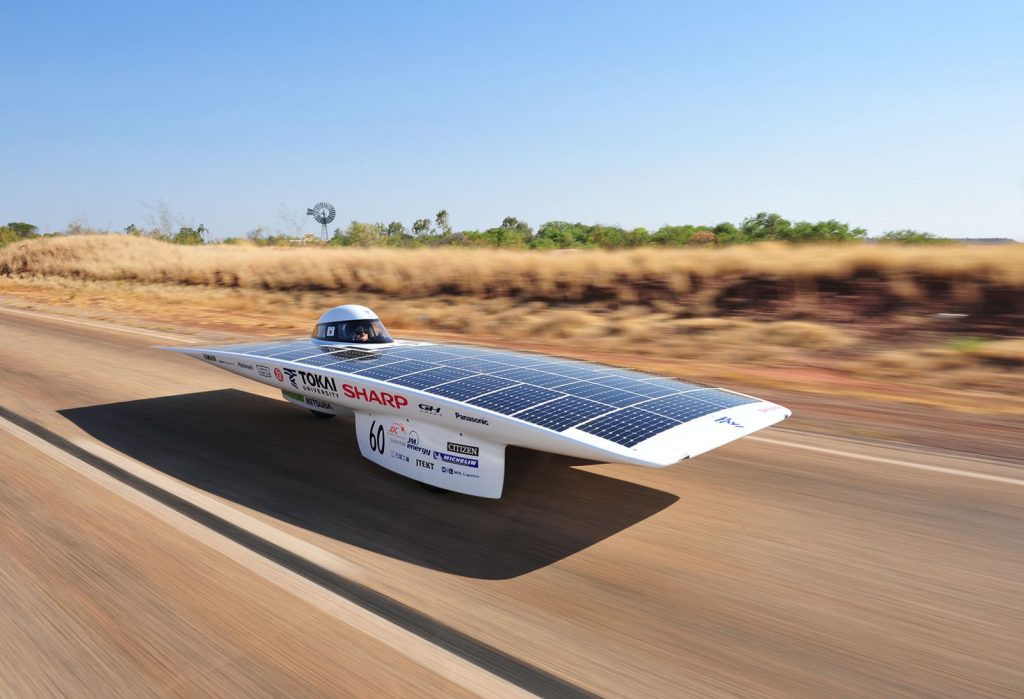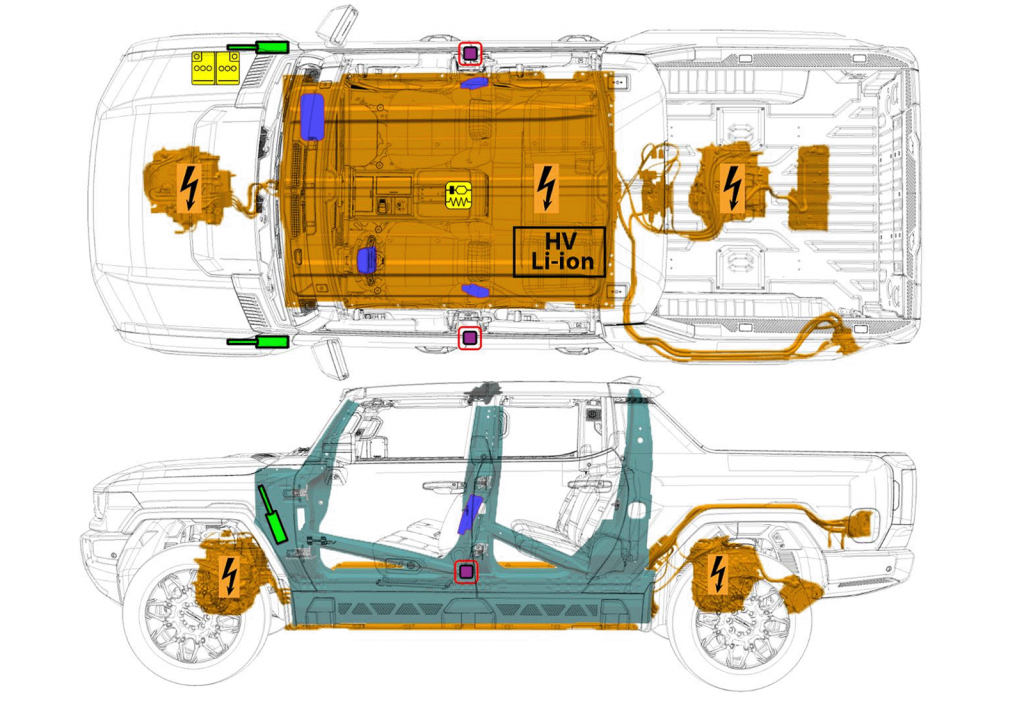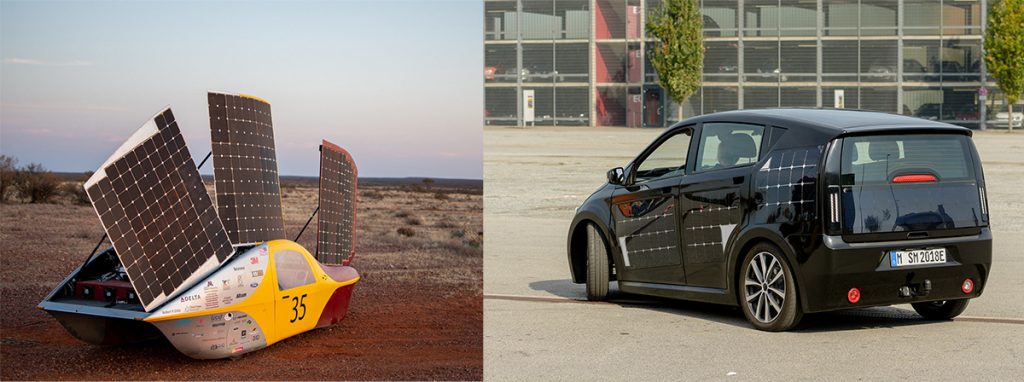Solar-powered road trips? Maybe not today, but there’s a bright future ahead
Solar car competitions show how innovations in battery efficiency and solar augmentations might take the EV revolution further
On October 22, an exceptional collection of vehicles from around the world will accelerate past the starting line of Australia’s World Solar Challenge. The highway between Darwin and Adelaide is more than a thrilling race to the finish line, it’s a sun-baked test of teams’ engineering skills in designing long-range solar cars.. Powered by less than 5 square meters of solar panels and a battery that can only have 5 kWh of stored energy at the beginning of the day, racers need to soak up the sun and fight air resistance at speeds of up to 130 km/h through nine checkpoints and 3,000 kilometers.
So, with competition this intense, are we all racing toward a future with solar cars?
The competition in commercial
Unfortunately, no matter who crosses the finish line this year, the Australian highway and the 2,000 kilometers of the South Africa’s Solar Challenge are the only places people are likely to see solar-powered cars on open roads in the near future. As recently as a year ago, there were several headline-grabbing upstarts set to release cars. But of the three companies profiled in this enthusiastic 2022 CNBC piece, only one, Aptera, is still slated for production. (Though with a history of delays, that isn’t certain either.)

With the recent proliferation of electric vehicles suggesting tipping points in private vehicle ownership around the world, it’s natural to wonder why solar energy, the fastest-growing source of renewable energy, doesn’t enter into the equation. In a recent White House announcement promoting investments in electric vehicles and related infrastructure, solar power wasn’t even mentioned.
The answer comes down to a too-delicate balance.
Balance issues
The World Solar Challenge is primarily geared toward university teams, with designs geared toward managing aerodynamics, weight, and maximizing solar panel exposure. The Challenger class, the flagship car type of the competition since it began in 1987, functionally restricts designs to the bare essentials: a cockpit-like driver’s seat and very little else.

And while entries in the Cruiser class begin to approach the kinds of multi-seat vehicles consumers are looking for, 2021’s winner carried a production price tag of €350,000 (about $375,000) that exceeds even the lofty prices of luxury electric vehicles like the six-figure Karma Revero.
In the battle for consumer EV supremacy, there’s no room for the kinds of ruthless engineering choices that define purpose-built racers. But that may be exactly where solar power has something to teach conventional electric vehicle manufacturers.
The dawn of EVs
Replacing gasoline-powered vehicles solves the problem of burning carbon-intensive fuels, but electric vehicles introduce many new challenges just as complex as the previous ones. First, there’s the problem of producing enough power for a total changeover of the domestic fleet, which would mean increasing national electricity production by a whopping 25 percent. And while electric vehicles are emission-free, their power sources currently aren’t, with fossil fuels still representing 60.2% of US electricity generation.
Even if countries were able to convert their electric grids overnight to higher-producing, emission-free sources (which isn’t likely without fusion power, itself still awaiting a successful commercial pilot), electric vehicles themselves carry challenges and costs. The prospect of offering enough charging infrastructure is already rankling jurisdictions with fights about charging standards and the availability of charging stations. Also, electric vehicles themselves still create pollutants, losing up to 8.8 pounds of their tires’ weight every year as airborne microparticles for the same reason that electric vehicles are viable at all: their batteries.
Big batteries
To achieve the kinds of driving ranges that make EVs practical replacements for gas-powered vehicles, they need massive energy storage to match driving ranges of more than 300 miles. For example, the electric GMC Hummer carries a 2,900-lb pack, equivalent to the weight of a typical Honda Civic. This increased weight leads to more wear on tires, increased costs for transportation, and more dangerous accidents. These costs are also reflected in the purchase price, where batteries make up about 30% of the total cost of an electric vehicle.

On the other hand, the BluePoint, the World Solar Challenge’s 2021 Challenger-class winner, had a total mass of less than 300 pounds, while the Cruiser winner was under 800 pounds. Which isn’t to say that solar car batteries aren’t susceptible to the same kinds of catastrophic failures that conventional EV batteries are, as the defending champion, Vattenfals, found out in 2021. Fortunately, the average consumer would never push their battery to these extremes, and commercial batteries are rigorously tested.

Where conventional EVs often use the chassis for their gas-powered equivalents, solar cars have been built from the ground up to make the most of their weight and size. That trade-off begins with having access to solar power, which is already possible for some EV models.
The 185-watt capacity of the 2023 Toyota Prius’s optional solar roof may be a small contribution to the vehicle’s overall power needs, but it suggests ways in which solar power isn’t all or nothing. And while the most prominent EV manufacturer, Tesla, has not offered any solar roof technology for its vehicles yet (aside from a characteristically cavalier X post by Elon Musk), its Charge on Solar app promises Tesla solar system customers the ability to charge exclusively on “excess” solar energy. That is: energy that isn’t being used by other devices connected to the home’s solar array.
The future of solar components is brighter than it seems.
At the moment, solar energy in cars is held back by two main factors: the efficiency of its solar PV panels and the available area to place them on. But while current solar PV efficiency rests under 30%, there’s good reason to be optimistic given the exceptional growth in renewable energy adoption.
With clean energy technologies expected to account for 62% of global energy investment this year, increased adoption could lead to increased familiarity and a critical mass for innovation. In short: scale can improve technology. And in the competition for creating viable solar vehicles, technological improvement is everything.
As for the limited space for solar panels on a car—the World Solar Challenge’s 5-meter limits are a realistic accounting of the average car’s roof size—new technologies like transparent solar glass would allow the vehicle’s available area to expand to include its windows. And though Sonos was ultimately a bust, its plan to integrate solar panels into the skin of the vehicle could yet increase the available surface area. Together, increased efficiency and surface area could turn solar panels from a novelty to either enabling short trips or extending vehicle range without needing to compete for limited charging spots.

On October 27, the World Solar Challenge winners will cross the finish line. But the winning teams won’t have crossed the finish line on the first day of the race; they’ll have endured heat, clouds, mundane road disruptions on the highway, and even residential traffic in multiple legs across seven days. Like solar energy technology, victory comes in stages. Solar cars are still in those early stages.



 Bright Light, Big Future: Solar Power on the Rise
Bright Light, Big Future: Solar Power on the Rise  Lithium-Ion Batteries: Hot growth, pressure, and looking toward the future
Lithium-Ion Batteries: Hot growth, pressure, and looking toward the future 